Our solutions
Back
16 tips for an ideal workplace
The ideal workplace, what does it look like? It just depends on what your work is and what tools you have available. An ergonomic workplace promotes the comfort and productivity of VDU workers. With some minor adjustments it is easy to create the ideal workplace. Check out our 16 tips below!
With some minor adjustments you can easily create the ideal workplace!
Good seating position
- Chair height: feet flat on the floor, knee angles 90-110°
Use a footrest if you cannot adjust the height of your desk yourself.
- Table height: at elbow height so that you sit relaxed.
- Armrest height: just below the table top so you can slide close enough to the desk to work comfortably.
- Backrest: Tilt the back of your chair slightly backwards for good support. The backrest should be adjusted between 90° and 120°.
- Screen height: Place the top of your screen(s) slightly below eye level.
- Distance to screen: at least one arm's length
Use an external monitor of at least 19 inches, an external keyboard and mouse.
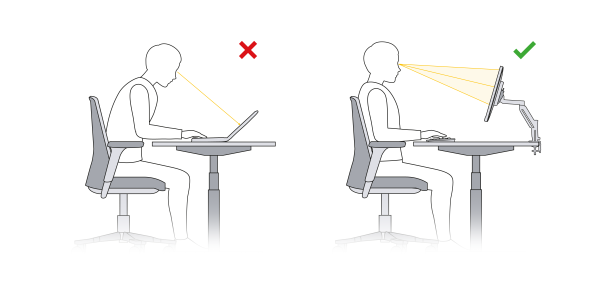
Healthy laptop use
Laptop stands: An essential part of any ergonomic workspace
- Avoid prolonged laptop use (>2 hours per day) without measures to improve comfort.
Use a laptop stand or extra screen with an external keyboard to reduce your neck strain and increase your comfort.
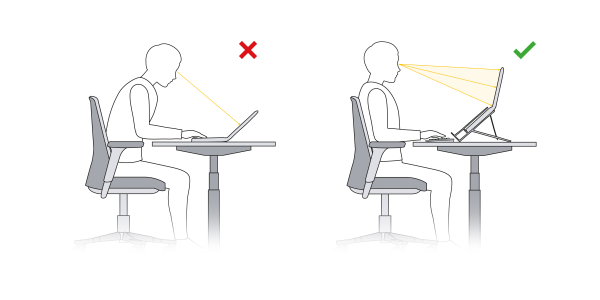
Work 'in-line'
- Place documents, your tablet or your smartphone in line with the screen on a slightly sloping surface for easy reading without bending your neck.
Use an in-line document holder.
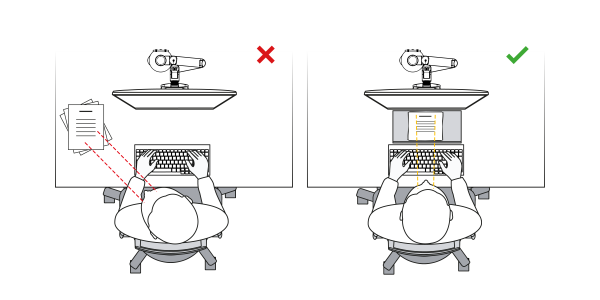
Mouse in line with the shoulder
Working with Mouse & Keyboard
- Avoid reaching for the mouse; use a compact keyboard, possibly with a separate numerical part that you can also place on the left.
Increase productivity by also using a separate compact keyboard when using a laptop or tablet.
- For extra comfort, use a large heat-insulating mouse pad. The mouse cursor moves smoothly across the screen on any table and your mouse hand stays warm.

Multiple monitors
Whitepaper: Optimal performance with two or more computer screens
- Work with 2 screens if you regularly work with two applications at the same time. Put the most used screen right in front of you. If you often need to compare data from multiple applications, put both screens in the middle in front of you.
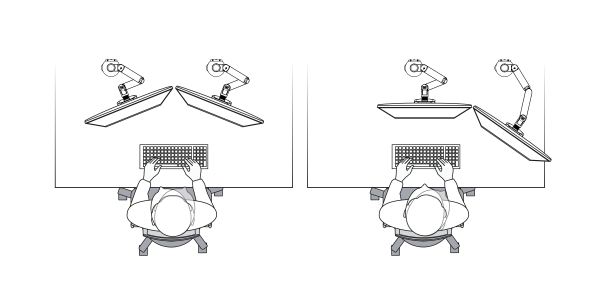
Let's WORK & MOVE
Try WORK & MOVE now for free for 30 days
- Use a chair with a tilt mechanism.
Small rocking movements keep you fit.
- Alternate between sitting and standing
Use a sit-stand desk
- Get out of your workplace regularly and go for a short walk. Increase your concentration and mental fitness.
Walk at least 3 minutes every hour
- Choose the workplace that suits the work
From meetings to brainstorming, from concentrated work to collaboration.
- Allow your brain to exercise and relax as well.
Regular pit stops increase your energy, concentration & performance.
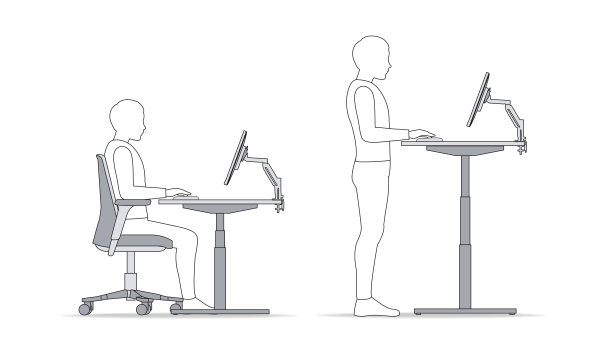
Need help? We're here for you
Look at our FAQ or contact us
Many customers preceded you
Read about their experience with BakkerElkhuizen
Select your country and language


